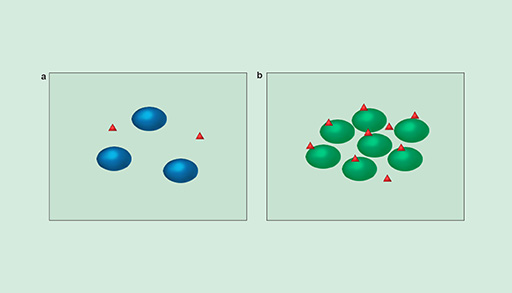1 Disrupting bacterial communication
Bacteria are single-cell organisms. For many years, they were thought to act as individuals and not be influenced by the bacteria around them. However, bacteria can communicate with each other in a process called
Activity 1 What is quorum sensing?
a.
a) When they detect other bacteria
b.
b) When they are on their own
c.
c) Always
d.
d) Never
The correct answer is a.
Answer
The correct answer is (a) when they detect other bacteria. Vibrio fischeri use quorum sensing to detect the presence of other bacteria and alter their behaviour so that they fluoresce.
a.
a) Using chemical messengers
b.
b) By touching each other
c.
c) Both of the above
The correct answer is a.
Answer
The correct answer is (a) chemical messengers. Bacteria release chemical messengers that build up as the number of bacteria increases. Above a critical level, receptors on the surface of bacteria detect the chemical messenger and change their behaviour.
a.
(a) Quorum sensing is the mechanism that bacteria use to communicate.
b.
(b) Quorum sensing allows bacteria to synchronise changes in their behaviour.
c.
(c) Quorum sensing allows bacteria to detect the presence of other bacteria.
d.
(d) All of the above
The correct answer is d.
Answer
The correct answer is (d) all of the above. Quorum sensing is the process by which bacteria use chemical messengers to detect and communicate with other bacteria, in order to synchronise changes in their behaviour.
As you saw in Activity 1, bacteria release

